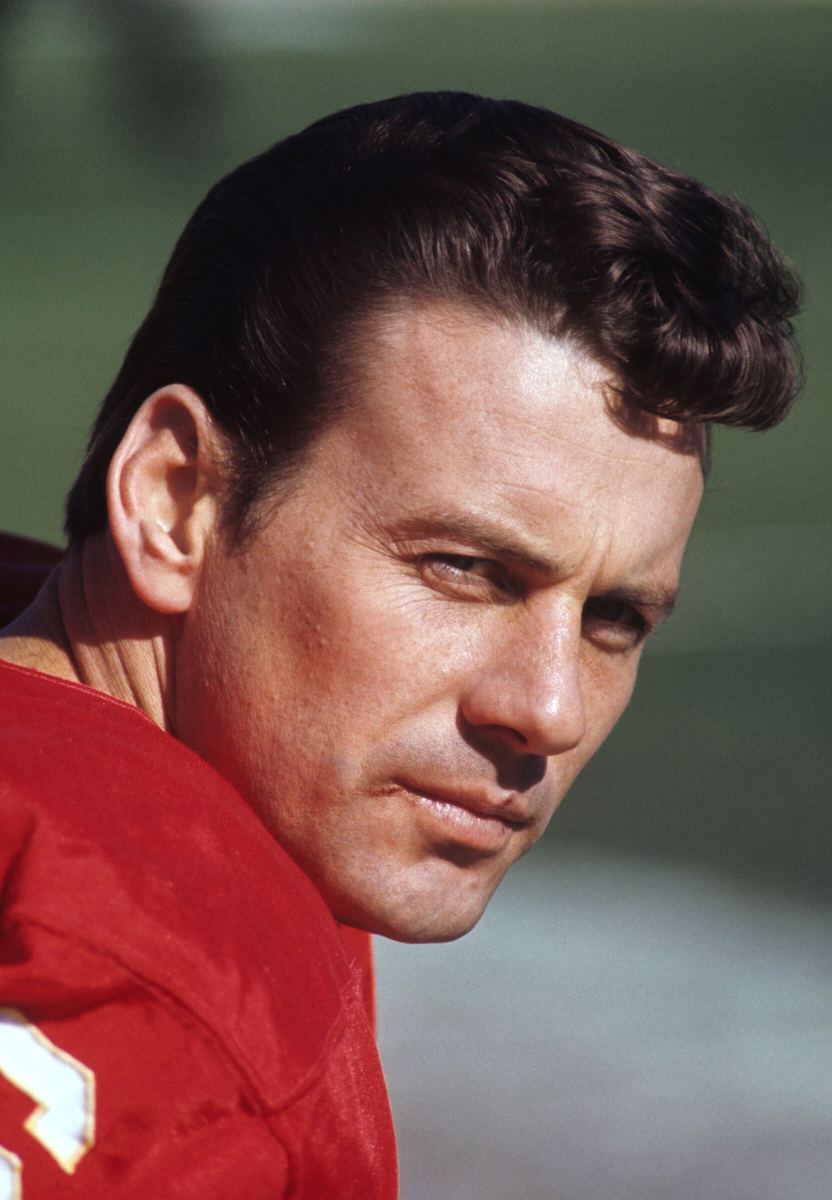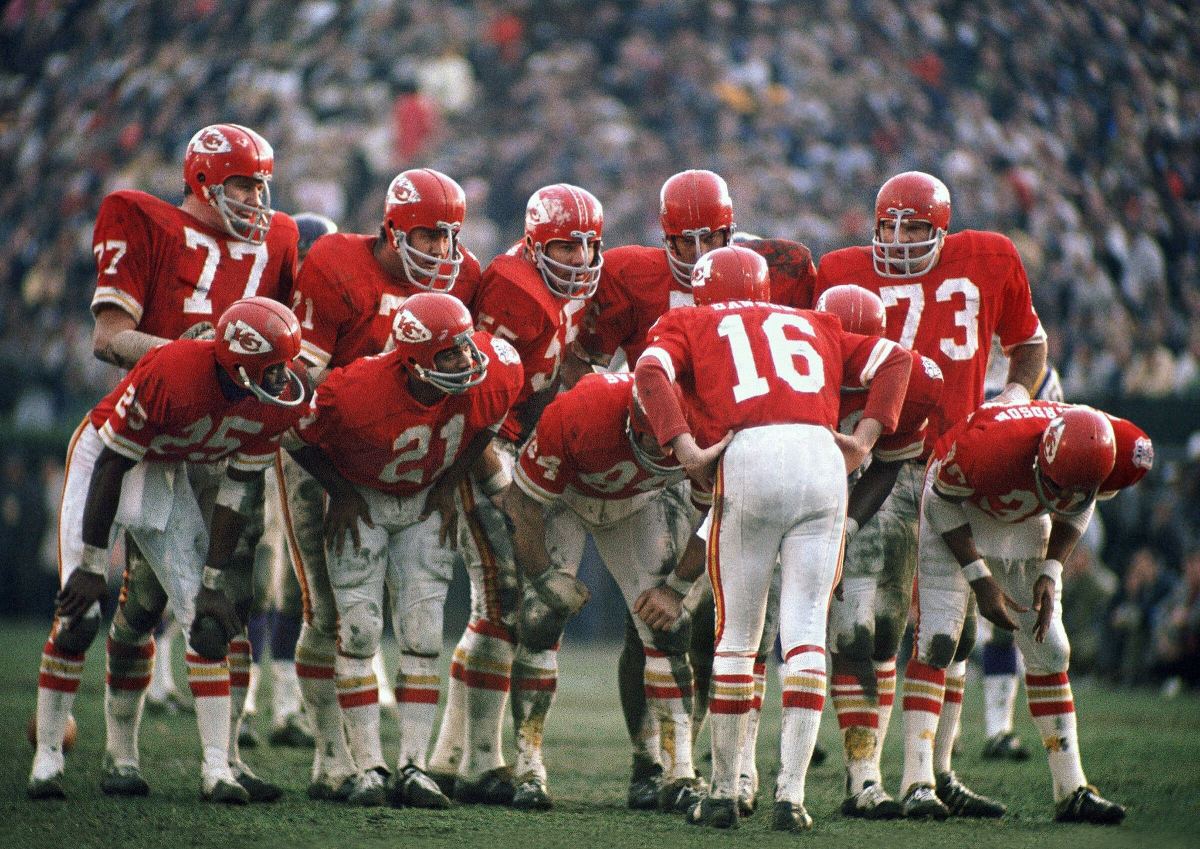Remembering Len Dawson: Super Bowl Champion, TV Host and ‘One Lucky Son of a Gun’
Before he became an overnight sensation in his sixth pro season for the Dallas Texans, Len Dawson languished as a backup in Pittsburgh and Cleveland, throwing 45 passes in five years. After the 1962 season, Dawson convinced Browns coach Paul Brown to release him. Brown obliged, and when another coach expressed an interest in Dawson, Brown told him, “As a fellow coach, I want you to know that I don’t think Lenny can play football in the National Football League.”
The good news was the coach in question, Hank Stram of the Texans, plied his trade in the American Football League. In new surroundings, Dawson blossomed into a Hall of Fame passer, midwifed the birth of what remains one of pro football’s most rabidly followed teams and, for good measure, stuck it to the NFL when the Kansas City Chiefs won Super Bowl IV over the Minnesota Vikings, the last game played by an AFL team before the merger.
And then Dawson, who died at age 87 shortly after entering hospice care, his family announced Wednesday, endeared himself to another generation of fans as the longtime co-host of HBO’s groundbreaking Inside the NFL, which served as the template for shows such as NFL Primetime and NFL GameDay.

Born the seventh son of a seventh son—considered in some cultures to bring special powers—Dawson grew up in Alliance, Ohio, 30 miles northeast of Canton in one of the most avid football pockets in the country. As a kid he preferred baseball (half a century after the fact, he could still rattle off every member of the Cleveland’s 1948 World Series–winning roster) but made a name for himself on the gridiron. He ended up at Purdue, where Stram, then the backfield coach, recruited him. Dawson threw four touchdowns in his first game and snapped No. 1 Notre Dame’s 13-game winning streak in his second game. He led the Big Ten in passing in all three of his seasons, and the Steelers took him sixth in the ’57 draft, one spot ahead of Jim Brown. And then ... nothing.
For three years in Pittsburgh he did little except, as he often said, “pick up every one of Bobby Layne’s bad habits.” Two years behind Milt Plum in Cleveland followed. By the time Brown cut him loose, Dawson was 27, had a career passer rating of 35.1 and was thinking of becoming a teacher. But being reunited with Stram made all the difference.
Dawson was not great at avoiding pressure, so Stram pioneered the moving pocket, allowing Dawson to throw on the move. That required a precision arm, which was Dawson’s greatest strength: “Len’s the most accurate passer I ever saw,” Stram said.
Stram let Dawson call his own plays, and the QB was not afraid to call someone else’s number. The Texans attempted an AFL-low 322 passes in 1962, but Dawson led the league with 29 TDs and threw just 17 picks at a time when interceptions were the cost of doing business. (The team Dallas beat in the ’62 AFL title game, the Houston Oilers, threw 48 interceptions in 14 games.)
Dawson also made a difference in the locker room. A 1962 SI feature said he “has the torso of a captain of the chess team and he is as sparkling as a piece of wet liver,” but also noted that he possessed a “look” that kept his teammates in line. “He can scare a 270-pound tackle with that look,” Texans owner Lamar Hunt said. “I can’t figure him out. I know he is the most completely matter-of-fact human being I have ever met. And I know, too, that he has the complete confidence of the team. They are afraid of him, I think.” As it turned out, the look was more about intense confidence than leering, which eventually earned Dawson the nickname Lenny the Cool. (Stram once told Dawson to never let his teammates see him sweat. Dawson’s response: “Quarterbacks don’t sweat. They perspire.”)
The next summer, Hunt moved the team to Kansas City and renamed it the Chiefs, and Dawson could finally play in a place that felt like his home. After a bumpy first three seasons, the Chiefs won the AFL in 1966, earning a berth in the first Super Bowl, at which Lenny the Cool was memorably photographed at halftime calmly smoking a cigarette and drinking a Fresca. (One imagines Steve McQueen would have done the same in that situation.) Dawson quickly became the face—and voice—of the franchise. He had a radio show four days a week and his own TV program that aired for 15 minutes six nights a week on KMBC, the local ABC affiliate.

After losing to the Packers in Super Bowl I, the Chiefs returned to the big game three years later in what ended up being the most adverse circumstances he’d face in football. Five days before the game a report broke on the Huntley-Brinkley Report that Dawson’s name had been found in the address book of Don “Dice” Dawson (no relation), a Detroit restaurateur under investigation in a federal gambling probe. Those being the days when newspapermen could freely roam the halls of team hotels, Dawson had to go into hiding in Stram’s suite. He couldn’t sleep and lost eight pounds in two days. (Still, he upheld his KMBC reporting duties.)
Dawson issued a strong denial, conceding only that he had spoken to Dice a couple of times and never about football. (Len would later be exonerated after an NFL investigation that included a polygraph.) The field served as something of a solace, and on Sunday he dissected the Vikings’ defense with a typically Dawsonesque performance: just 17 attempts, but 12 completions for 142 yards and a touchdown. He also called a nearly perfect game: Noticing that the ends on Minnesota’s famed front four (Purple People Eaters) were pinching and the corners were playing off the line, Dawson called 52 Go Reverse—an end around—on three occasions. The Chiefs had run the play twice all year with no success, but each time Dawson called it against the Vikings the result was a first down as Kansas City beat the 13-point favorites 23–7.
By then Dawson was 34 and struggling with knee injuries. One more playoff appearance followed—1971, when the Chiefs lost an epic double-OT contest to the Dolphins. Stram was fired after a 5–9 season in 1974, and the next year, at age 40, Dawson started just five games. He retired after the season, but he didn’t stay out of work long.
In 1977, the fledgling Home Box Office tapped Dawson and former Miami linebacker Nick Buoniconti to host Inside the NFL. The one-hour show featured NFL Films highlights, narrated by Harry Kalas, with analysis from the two former players. That was it: no telestrators, no replay breakdowns, no fancy graphics. Just two amiable players talking football—and offering proof that Dawson was far more charismatic than wet liver. He stayed on the show for 24 years, and in the ’80s returned to KMBC as a sports anchor, while also calling Chiefs games on the radio.
Dawson finally retired from the TV station in 2009. At a small going-away gathering, his colleagues called on him to make a speech. Holding a plastic knife he was using to cut his farewell cake, he recounted his journey, one that made him a Kansas City mainstay for the better part of six decades. “I am the seventh son of a seventh son,” he said, pointing with the knife for emphasis. “And I have been one lucky son of a gun.”
More From SI Vault:
